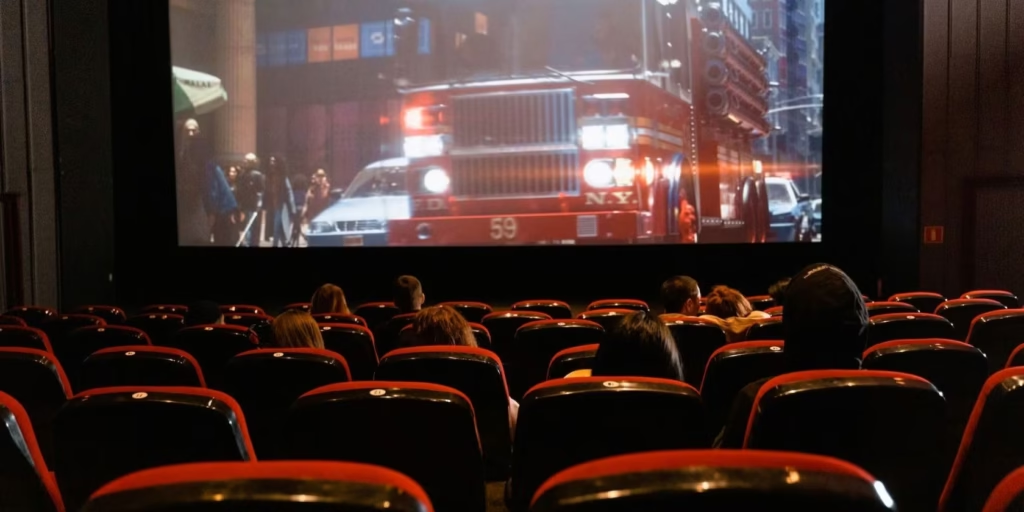
Movies are a universal form of entertainment, bringing stories to life through a blend of visuals, dialogue, and sound. However, for individuals who are blind or visually impaired, experiencing movies requires specialized accessibility features. With technological advancements and inclusivity efforts, blind individuals can fully immerse themselves in films, whether at the cinema or from the comfort of their homes.
The Role of Audio Description in Enhancing Movie Experiences
One of the most significant tools for blind moviegoers is audio description (AD). This feature provides a narrated account of visual elements in a movie, including:
- Character movements and facial expressions
- Scene transitions and setting descriptions
- Non-verbal actions and silent moments
These narrated details are strategically inserted during natural pauses in dialogue, ensuring that blind viewers receive critical visual information without disrupting the movie’s flow.
How to Access Audio Description
Most modern movie theaters and streaming services offer audio description options. Viewers can activate AD through:
- Cinema Headsets – Many theaters provide wireless headsets that deliver the AD track directly to the user.
- Streaming Platforms – Services like Netflix, Disney+, and Amazon Prime Video offer AD-enabled movies, often accessible through the audio settings.
- Smart TVs and Media Players – Devices such as Apple TV and Roku have built-in accessibility features, making it easier for visually impaired individuals to enable AD.
Assistive Listening Devices: Amplifying the Audio Experience
Many blind individuals rely on heightened auditory perception to enjoy movies. Assistive listening devices (ALDs) enhance sound clarity, particularly in theaters where background noise can be overwhelming. These devices include:
- Infrared Systems – Wireless headsets that receive direct audio from the theater’s sound system.
- FM/Radio Frequency Systems – Personal receivers that deliver clearer sound with adjustable volume.
- Induction Loop Systems – Work with hearing aids to filter ambient noise and provide direct audio input.
These tools allow blind moviegoers to focus on dialogue, sound effects, and music without distraction.
Closed Captioning and Subtitles: Additional Support Tools
Though designed for individuals with hearing impairments, closed captioning (CC) and subtitles also benefit blind and visually impaired viewers. These features provide:
- Textual representation of dialogue and sound effects
- Identification of speakers and background noises
- Real-time synchronization with the movie’s audio
While not all blind individuals use CC, those with some vision may rely on large-format or high-contrast captions for additional context.
Tactile Interpretation and Companion Assistance
Some blind individuals prefer tactile interpretation or companion assistance for a more interactive movie experience. These methods include:
- Tactile Interpreters – Trained professionals use touch-based cues to describe scenes and characters.
- Companion Narration – A sighted friend or family member provides whispered descriptions during key moments.
These approaches offer a more personalized experience, allowing blind individuals to engage with movies on a deeper level.
Home Entertainment: Streaming and Smart Technology
The rise of streaming services has significantly improved accessibility for blind viewers. Platforms like Netflix, Hulu, Disney+, and Apple TV+ feature extensive AD catalogs, making it easy for blind individuals to enjoy movies at home. Additionally, smart technology has introduced:
- Voice-Controlled Remotes – Devices like Amazon Alexa, Google Home, and Apple Siri allow hands-free navigation of streaming platforms.
- Accessible Media Players – Apps like VoiceOver (iOS) and TalkBack (Android) provide spoken feedback for movie selection and playback.
- Customizable Display Settings – High contrast, text enlargement, and screen reader compatibility cater to low-vision users.
Inclusive Cinema Initiatives
Several organizations and cinema chains have embraced inclusivity by providing:
- Dedicated Accessible Screenings – Theaters schedule specific movie sessions with AD and ALD support.
- Be My Eyes Integration – Some cinemas partner with apps like Be My Eyes, which connect blind users with volunteers who assist in real-time navigation and movie selection.
- Training for Staff – Ensuring that theater employees understand accessibility options and can assist blind patrons effectively.
The Future of Accessibility in Film
Technological advancements continue to shape the movie experience for the visually impaired. Emerging innovations include:
- AI-Powered Audio Description – Machine learning algorithms can generate real-time audio descriptions for movies.
- Haptic Feedback Devices – Wearable technology that translates visual cues into vibrations or pressure patterns.
- Augmented Reality (AR) Glasses – Smart glasses with built-in AD capabilities to enhance independent movie-watching experiences.
Conclusion
Watching movies as a blind individual is no longer a challenge but an enriching experience, thanks to a growing array of accessibility features. With audio description, assistive listening devices, tactile interpretation, and smart technology, blind viewers can fully engage with films just as sighted individuals do. As technology continues to evolve, inclusivity in entertainment will only improve, ensuring that cinema remains a universal joy for all.